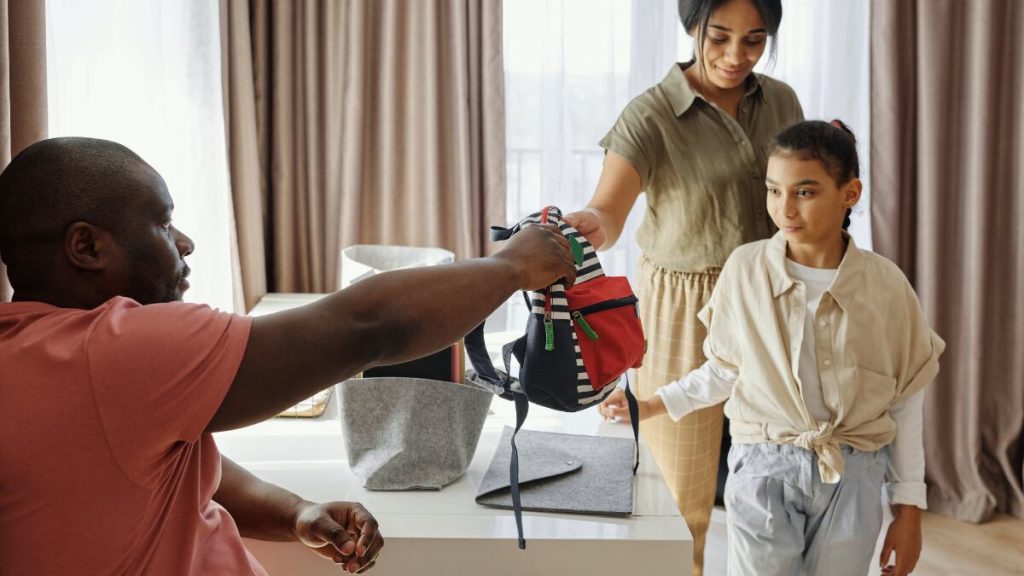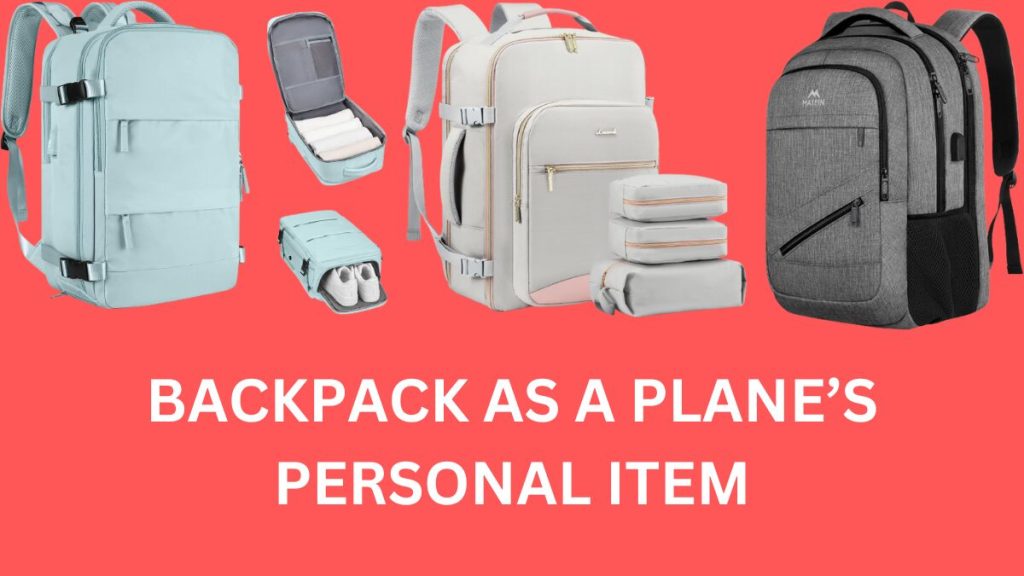Backpack straps can be quite uncomfortable, especially if you’re carrying your pack for a long time. This is because the straps are usually too tight and don’t distribute the weight evenly. In this article, we’ll show you five easy tips to make backpack straps more comfortable. By following these tips, you will not only reduce the amount of pain that you feel, but you will also be able to carry your backpack with ease. So, if you’re looking for ways to make your backpack straps more comfortable and less pressure-bearing, read on!
How can I make my backpack straps less painful?
The first step is to make sure that your backpack straps are the right size. If they’re too tight, they will be extremely painful and you may find it difficult to carry your backpack for a long time. On the other hand, if your straps are too loose, the weight of your pack will shift around constantly and this can also be quite uncomfortable.
Once you’ve selected the right size strap, you should then ensure that they’re properly adjusted. This means that each strap should fit snugly against your body and should not move or slip around when you walk or run. And finally , make sure that the straps are properly padded. This will reduce the amount of pressure that is applied to your back and shoulders, making backpack straps less pain-causing.
What is the best way to make backpack straps more comfortable?
There are a few different things that you can do to make your backpack straps more comfortable. Firstly, you can try using a shoulder strap extender. This will add extra length to the strap so that it is placed further away from your shoulder and this will reduce the amount of pressure applied to your back.
You could also try wearing a padded belt around your waist or hip area. This will distribute weight evenly across your entire body and help reduce the amount of pain that is felt when carrying a heavy backpack for an extended period of time.
Or, finally, you could invest in a good quality backpack strap padding. This will help to reduce the amount of pressure that is applied to your back, shoulders and neck, making backpack straps much more comfortable.
Should I use a different kind of fabric to make backpack straps more comfortable?
There is no definitive answer as to whether you should use a different kind of fabric when making your backpack straps more comfortable. Some people choose to use padding material while others prefer to use shoulder strap extenders. Ultimately, the best way to find out if using different straps will make your backpack more or less comfortable is by trying both options and seeing which one provides the most relief.
There are a number of different fabrics that can be used for backpack straps, and it’s important to choose the right one for your needs. Some types of fabric are more comfortable than others, and will provide better support when worn over extended periods of time.
Some popular materials that can be used for backpack straps include cotton, polyester, canvas, suede leather,…
What are the best materials for making backpack straps more comfortable?
There is no definitive answer as to what the best materials for making backpack straps more comfortable are. Ultimately, it depends on your individual needs and preferences. Some people choose to use padding material while others prefer to use shoulder strap extenders.
There are a few things to consider when choosing the best materials to make backpack straps more comfortable. The strap should be comfortable and durable, while also being stylish.
Some popular materials used for backpack straps include neoprene, leather, and microfiber. Neoprene is a synthetic rubber like material that is water resistant and comfort-able to wear. Leather is a natural material that’s strong yet soft enough to be worn repeatedly without breaking down or becoming uncomfortable. Microfiber is made up of tiny threads that make it lightweight and durable, perfect for bag backs with heavy loads.
Wide Shoulder Adjustable Strap
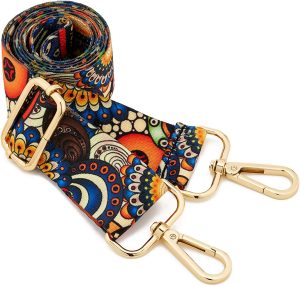
How do you know when a pack is too heavy for your shoulders?
When it comes to the weight of a pack, it’s important to remember that your body will naturally compensate for lighter packs. For example, if you are carrying a 20-pound pack and wearing a 10-pound backpack, your body will actually feel as though the pack is 30 pounds when you’re actually using it. So, always make sure that the load you are carrying is comfortable for your shoulders and spine. So read this post till the end so that you can know how to make backpack straps more comfortable which is best for your physical and mental health.
When you’re hiking or backpacking, it’s important to make sure that your pack is evenly distributed across your shoulders. If the weight of the pack is concentrated on one shoulder, it can be really difficult to move and will quickly become uncomfortable.
Adjustable Waterproof Replacement Shoulder Strap
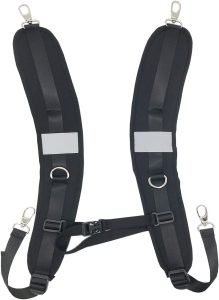
To determine how heavy a pack is actually weighing, use this simple formula: 10% of the total load = the weight of an individual item in pounds. So if you are carrying 20 items and weigh 150 pounds, your pack’s weight would be 6 pounds (10% of 200 equals 6).
If a pack feels too heavy for your shoulders, try removing some items from it until it feels more comfortable. Be sure to adjust the straps so that they are snug but not too tight. And always take caution when loading and unloading your backpack; overloading can cause damage to both yourself and your gear!
How does my body deal with all of this weight on my shoulders and back?
One of the most common complaints among people who are overweight or obese is back and shoulder pain. This can happen because excess weight puts pressure on the spine, causing spinal stenosis (narrowing of the spinal column). This narrowing makes it difficult for your body to move freely, which in turn causes pain and discomfort.
There are a few things you can do to help ease this pain and make life more comfortable:
– Stretch regularly. Stretching helps reduce tension in muscles and tendons, which relieves tension headaches and backaches. Perform simple stretches before bedtime to help relax your whole body overnight.
– Do exercises that target the lower back. Hamstring curls, side lying leg lifts, Swiss ball hip bridges all work wonders for reducing stress on your backside.”
Matein Travel Laptop Backpack
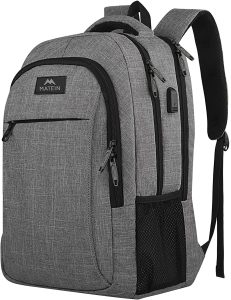
How To Fix An Uncomfortable Backpack (troubleshooting guide How to make backpack straps more comfortable)
If you experience back pain when wearing a backpack, there are several things that you can do to make the backpack straps more comfortable.
– Check the fit of your backpack. Make sure it is snug but not too tight or uncomfortable. The straps should be snug enough to stay in place, but not so tightly wrapped around your shoulders that they cause pain.
– Test out different adjustment settings on the straps. You may find that adjusting them towards the center of your shoulder works best for you.
– Take a break every now and then and switch positions to redistribute weight differently across your entire body. This will help reduce pressure on one area and improve overall comfort levels .
– Consider purchasing a backpack with shoulder straps designed specifically for heavy users. These backpacks typically have thicker straps and padding that help to distribute weight more evenly, preventing discomfort and pain.
Sizing Your Backpack
When you’re planning your next backpacking trip, it’s important to think about what items you’ll need and how much space they’ll take up. Backpackers have a wide range of preferences when it comes to pack size, so there is no one right answer. However, here are some general guidelines that can help you decide the right size backpack for your needs. To make backpack straps more comfortable the size of your backpack can play a very important role.
– Start by calculating the number of days you plan on staying in each destination. This will help determine which type of backpack is best suited for your needs (lightweight or heavy-duty).
– Next, figure out how many miles per day you expect to hike or bike. This will help determine whether a small or large bag is more appropriate.
– Finally, consider what types of activities (hiking/cycling/walking) you’ll be doing during your trip. This will help narrow down which style bag(s) are best for those activities as well.
Wearing Your Backpack
The way of wearing a backpack can also make backpack straps more comfortable. When backpackers are out hiking or biking, the weight of their gear is constantly pulling down on their shoulder straps. This can cause discomfort and pain in the shoulder joint. To avoid this problem, try to wear your backpack in a way that redistributes the weight more evenly across your body.
For example, you can lower it so that your chest rests against your back strap rather than hunched over with the pack hanging off one shoulder
Part One – Putting the Backpack On Your Shoulders
Do you ever feel like you’re carrying the weight of the world on your shoulders? It’s not an easy thing to bear, and it can take its toll on both body and soul. But there is something that can help: putting the backpack on your shoulders.
1. first, strap the shoulder straps around your torso so that they are snug but not tight
2. second, adjust the width of the shoulder straps to fit your body comfortably
3. lastly, make sure that the hip belt is situated properly and adjusted to sit just below your waistline
Part Two – Tighten the Hip Straps to Transfer the Weight
If you’re feeling tight in the hips, it might be time to tighten the hip straps on your exercising equipment. Tightening these straps will help transfer more weight and tension from your feet to your glutes, which will result in a stronger core and better posture.
1. buckle the hip strap evenly across your hips
2. pull the shoulder strap tight to ensure that the weight of the backpack is distributed evenly on both shoulders.
Part Three – Adjust Your Shoulder and Side Load Straps
Always adjust your shoulder and side load straps, to make backpack straps more comfortable. If your backpack is constantly pulling down on your shoulder straps, it might be time to adjust the shoulder and side load straps. This will help distribute the weight more evenly across your back, shoulders and hips.
1. position the shoulder strap at a comfortable length so that it rests against your collarbone
2. adjust the width of the strap to fit comfortably against your shoulder blade
3. if necessary, adjust the side load strap so that it sits securely in front of your hip
Part Four – Sternum Straps
If you’re finding that your straps are digging into your sternum, it might be time to adjust the strap length. This will help ensure that the weight of the backpack is evenly distributed across both shoulders and hips.
1. measure from shoulder strap to ends of strap (or collarbone)
2. make a small adjustment – if necessary – to length of strap
To make backpack straps more comfortable know the Anatomy of a Backpack
The hip belt and shoulder strap are designed to help distribute the weight of your backpack across your lower back, shoulders and hips. The sternum strap helps ensure that the weight is evenly distributed across both shoulders.
The main part of your backpack is the frame
Keeping your backpack’s frame well-built is essential to preventing injuries. A poorly designed or constructed frame can cause significant pain and discomfort, not to mention potential setbacks on your daily trek.
There are a few key things you should look for in a good backpack frame: it should be sturdy, adjustable, and comfortable. It also needs to fit properly so that it doesn’t bounce or jiggle when you’re walking or running.
Once you have found the perfect frame for your specific needs, make sure to keep its construction top Secret! Often times, firms that sell backpacks will include very little information about how the frame is built or assembled; this is why it is important to do your own research before making a purchase.
The second part of your backpack is the padding
The second part of your backpack is the padding. It’s important to have enough padding so that you don’t feel any shocks or vibrations when you’re walking or hiking. A good rule of thumb is to add at least one inch of padding to each side and the back of your backpack. This will help reduce the amount of pain and discomfort you experience while using your backpack, and make it more comfortable to carry around.
The third part of your backpack is the backpack straps
Backpack straps are an important part of your backpack’s overall design. They play a key role in how the pack is worn and how comfortable it is to wear. There are a variety of different types of straps available on the market, so it’s important to choose one that best suits your needs.
There are two main types of straps: shoulder straps and waist/hip belts.
Shoulder strap designs are typically wider than waist belt designs, which makes them better suited for carrying heavier loads over long periods of time. Waist belt designs also provide more support around the middle, which can be helpful when carrying items that you need to keep close at hand (like your phone or keys).
It’s worth noting that not all backpacks come with either type of strap – make sure to check before purchase!
The fourth part of the backpack is the bag
According to many backpackers, the fourth part of the backpack is often overlooked – but it’s essential for a comfortable trip. A good bag should be large enough to fit everything you need, yet not so heavy that you can’t carry it all. It should also have adjustable straps and padding to distribute weight evenly, and a water-resistant lining to keep your belongings dry in case of rain or splashback.
Here are some other features that may be important to you:
– A pocket for storage cards, passports, cash, etc.
– External compartments (for sunglasses or snacks)
– Several pockets inside the main compartment for organizing smaller items
The fifth part of the backpack is Hip Belt
The hip belt is a key part of the backpack system. It helps to distribute weight evenly across your hips, and supports your back while you are hiking or climbing.
There are a few things to consider when choosing a hip belt:
– The width of the belt should be based on your waist size. Most belts have an adjustable strap that can be tightened or loosened accordingly.
– The material of the belt should be comfortable and durable. Leather is usually considered the best option because it’s both tough and flexible, making it ideal for versatile use.
– Finally, make sure that the buckle fits properly – it needs to be sturdy enough to keep the belt in place but small enough so that it doesn’t get in your way during activity
Proper Backpack Weight Distribution is also very helpful to make backpack straps more comfortable
When backpack weight is distributed properly, it can make the backpack straps much more comfortable. This is because the load will be evenly distributed across both shoulders and the weight won’t feel as heavy or as concentrated on one shoulder. However, distributing the weight correctly is not easy to do. Follow these tips to create a balanced backpack:
– Make sure your pack weighs about half of your body weight. This means that if you are carrying 20 pounds in your backpack, it should weigh 10 pounds on each shoulder.
– distribute the weight evenly between both sides of your body by putting heavier items towards the middle of your back and lighter items closer to your arms and legs.
– use a rolling platform or suspension system when packing so that all of the contents stay level despite changes in terrain (such as walking uphill).
Impacts on your body of Uncomfortable straps of your Backpack
If you’re constantly feeling uncomfortable when wearing your backpack, it’s probably because the straps are too tight. A poorly fitting backpack can cause endless back pain and discomfort, as well as restrict your range of motion.
Back pain
One of the most common back pain symptoms is shoulder pain. This occurs when the strap that connects your backpack to your shoulder gets too tight, and it throws off your balance. When this happens, you’re more likely to fall or stumble due to balance issues in addition to back pain.
Forcing yourself to carry a heavy backpack can also cause headaches and neck discomfort, especially if the weight distribution on your straps is incorrect from step one. Instead of enduring these uncomfortable side effects, make sure that your backpack fits properly by following our tips below and try to make backpack straps more comfortable :
– Always try on a pack before buying it to make sure it’s the right size. Most backpack manufacturers have a size chart that can help you find the perfect fit.
– If your backpack is too big or small, try adjusting the shoulder straps and waist belt to ensure a comfortable and balanced weight distribution between both shoulders and hips.
– Consider using a rolling platform when packing your backpack to keep contents level, even on uneven surfaces like stairs or escalators . This type of system attaches to your backpack and helps you keep your gear stable as you walk or run.
– Use compression straps on the sides of your backpack to help hold everything in place while hiking or travelling. These straps should be comfortable, but tight enough so that they don’t loosen over time.
All of these protective measures will go a long way in mitigating back pain and discomfort when packing for an extended trip, no matter what terrain you’re traveling through.
Neck pain
If you experience pain in your neck when wearing a backpack, try adjusting the shoulder straps and waist belt to ensure a balanced weight distribution between both shoulders and hips. If the pain persists, it may be necessary to use compression straps on the sides of your backpack to prevent heavy items from shifting around while hiking or travelling.
Backpacks are one of the most popular pieces of clothing in today’s world. But did you know that they can actually be quite uncomfortable? The straps on backpacks often dig into your neck, causing pain and discomfort. There are a few simple ways to make backpack straps more comfortable so that you don’t have to suffer from Neck pain.
- Choose a backpack with padded straps.
- Make sure the shoulder strap is properly tightened so it is not too loose or too tight.
- Try wearing a weighted vest when using a backpack for prolonged periods of time.
Headaches
If you experience frequent headaches, it may be necessary to adjust the weight distribution of your backpack. Try using a rolling platform when packing your backpack to keep contents level, even on uneven surfaces like stairs or escalators.
If that doesn’t solve the problem, try wearing a hat and sunglasses while travelling in order to reduce exposure to sunlight. Finally, drink plenty of water and avoid caffeine-rich drinks when travelling in order to prevent dehydration headache symptoms.
Stress on your spine
If your backpack is constantly pulling on your back and neck, it may be indicative of excessive spinal compression. To test this theory, try wearing a shoulder strap weight lifter for a few days before travelling in order to determine the cause of your pain. Once you know the source of the discomfort, you can take appropriate steps to mitigate it .
There are several reasons to make backpack straps more comfortable
If you’re like most people, you don’t spend much time thinking about backpack straps. But believe it or not, those shoulder straps can actually be quite uncomfortable – especially if they’re not made with comfortable padding.
Here are a few reasons why you should to make backpack straps more comfortable:
– They’ll help distribute the weight evenly across your shoulders and reduce pain in the neck and upper back.
– The extra comfort will also encourage you to wear your backpack for longer periods of time, which could lead to increased productivity.
– Bad posture is one of the key causes of chronic pain disorders, so making sure your backpack straps are accommodating will help minimize this problem.
Summary
You are still confused? Don’t worry! We have prepared the end of this blog for you. All you need to do is follow those tips and adjust your backpack straps to make backpack straps more comfortable. Remember, comfort does not come before durability and functionality in your bags. So, make sure you choose wisely by checking for quality fabric, stitching and lightweight design as well.
Did we forget anything? Don’t worry! We got this covered too as we told about how to make backpack straps more comfortable in the end part. So head there if you’re looking for some tips on what makes a good backpack strap.
Have you adjusted backpack straps yet? Is it time for a change?


